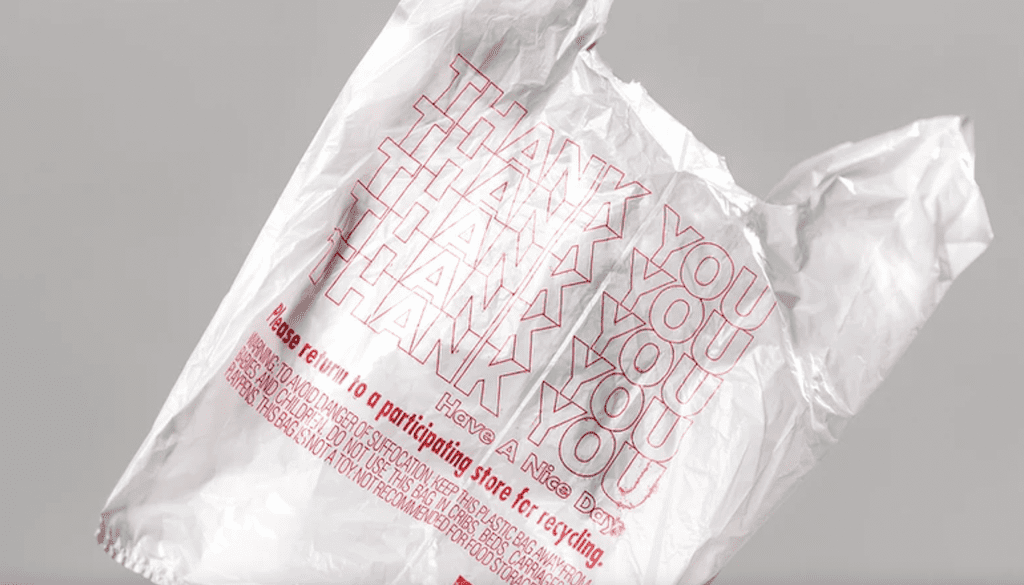California Governor Gavin Newsom signed off on a new law that he says signals the state’s desire to “go further than any other” when it comes to cutting down on the production of plastic and single-use packaging. Characterized as “the most significant overhaul of California’s plastics and packaging recycling policy in history,” the Plastic Pollution Prevention and Packaging Producer Responsibility Act requires, among other things, for 30 percent of single-use packaging to be recyclable, reusable or compostable by 2028, 40 percent by 2030 and 65 percent by 2032, and the new law puts the onus on companies, meaning that certain brands and retailers will likely be impacted.
Signed into law on June 30, the Plastic Pollution Prevention and Packaging Producer Responsibility Act consists of multiple mandates aimed at cutting down on the amount of new plastic produced, increasing recycling rates within the state of California, and ensuring that companies do the heavy-lifting in making this shift. For example, the law requires that in addition to “producers” offering up single-use packaging – whether it is plastic or not – that is entirely recyclable or compostable by 2032, plastic producers must reduce the level of plastic in single-use products (including single-use plastic bags) by 25 percent by 2032.
(The law defines a “producer” as a “person who manufactures a product that uses covered material and “who owns or is the licensee of the brand or trademark under which the product is used in a commercial enterprise, sold, offered for sale, or distributed in the state.” As such, it applies to both in-state and out-of-state entities that do business in California. As for “covered material,” that refers to any “single-use packaging that is routinely recycled, disposed of, or discarded after its contents have been used or unpackaged, and typically not refilled or otherwise reused by the producer.”)
The Plastic Pollution Prevention and Packaging Producer Responsibility Act places additional burdens on companies in the business of manufacturing plastic products, with the California law requiring that plastic producers join a producer responsibility organization and collectively contribute $5 billion over the next ten years to fund recycling.
“As with other extended producer responsibility laws,” the Plastic Pollution Prevention and Packaging Producer Responsibility Act“ seeks to leverage business relationships to effectuate change throughout the supply chain,” according to Keller and Heckman LLP’s Jean-Cyril Walker and Alexa Pecht. As such, the law “does not focus on packaging manufacturers but rather, those companies that sell or distribute ‘products’ using such packages in the state.” In other words, the new law will “primarily affect those companies that put their product name and brand on the covered material, whether or not they have actually manufactured the plastic packaging.”
While cosmetics and haircare companies immediately come to mind, Walker and Pecht say that they anticipate that the effects of the new regulation “will be felt throughout the supply chain, as product manufacturers and/or brand owners, alike, incorporate compliance in purchase agreements.” In a recent note, attorneys from ArentFox Schiff echoed this sentiment, stating that due to the size and importance of the California market, the new law is expected to “prompt a nationwide change in the plastics industry, as companies are likely to adapt to California’s standards regardless of whether their products are also sold elsewhere.” They encourage companies to start “looking for ways to achieve the reduction and recycling requirements of the new law and provide the appropriate products to customers.”
At the same time, a separate bill that is set for a vote in the California Senate Appropriations Committee (potentially as soon as this summer) could hit companies and retailers, including those in the fashion space, even more significantly. If enacted, AB-2026 – which focuses on the recycling of plastic packaging – would specifically require “e-commerce” entities that “ship purchased products in or into the state” to reduce the units of single-use plastic packaging they use by a certain percentage by January 1, 2030. The bill states that such single-use plastic includes things like “plastic shipping envelopes, cushioning, and void fill, and expanded and extruded polystyrene.”
Legislators have not yet revealed the percentage reduction that the law will require companies to make from their 2023 calendar year to the start of 2030. Although, the bill does specify that such a mandate would only apply to companies that have annual gross sales greater than $15 million and more than 100 full-time-equivalent employees.
California is not the only one taking a close look at use of plastics and single-use packaging; it is the fourth state to pass such an extended producer responsibility bill. Beyond that, “there is there is increasing private sector focus as recently reflected in the number of shareholder proposals urging companies to ramp up efforts to reduce plastics waste,” according to WilmerHale’s Peggy Otum, Shannon Morrissey and Tessa Opalach. “During the 2022 proxy season, more than a dozen plastics-related shareholder proposals appeared on proxy ballots,” generally requesting that the company issue reports to “identify how environmental sustainability efforts could be advanced through development of comprehensive sustainable packaging policies and reducing reliance on plastics.”
“Two of the proposals passed and a few others received more than 30 percent favorable votes, indicating significant support from shareholders for action to address plastics waste,” per Otum, Morrissey and Opalach, who note that the “increasing trend of plastics-related regulation, enforcement, and litigation is coalescing to present a host of potential legal and reputational risks to both the producers of plastics packaging and the companies they supply.”











